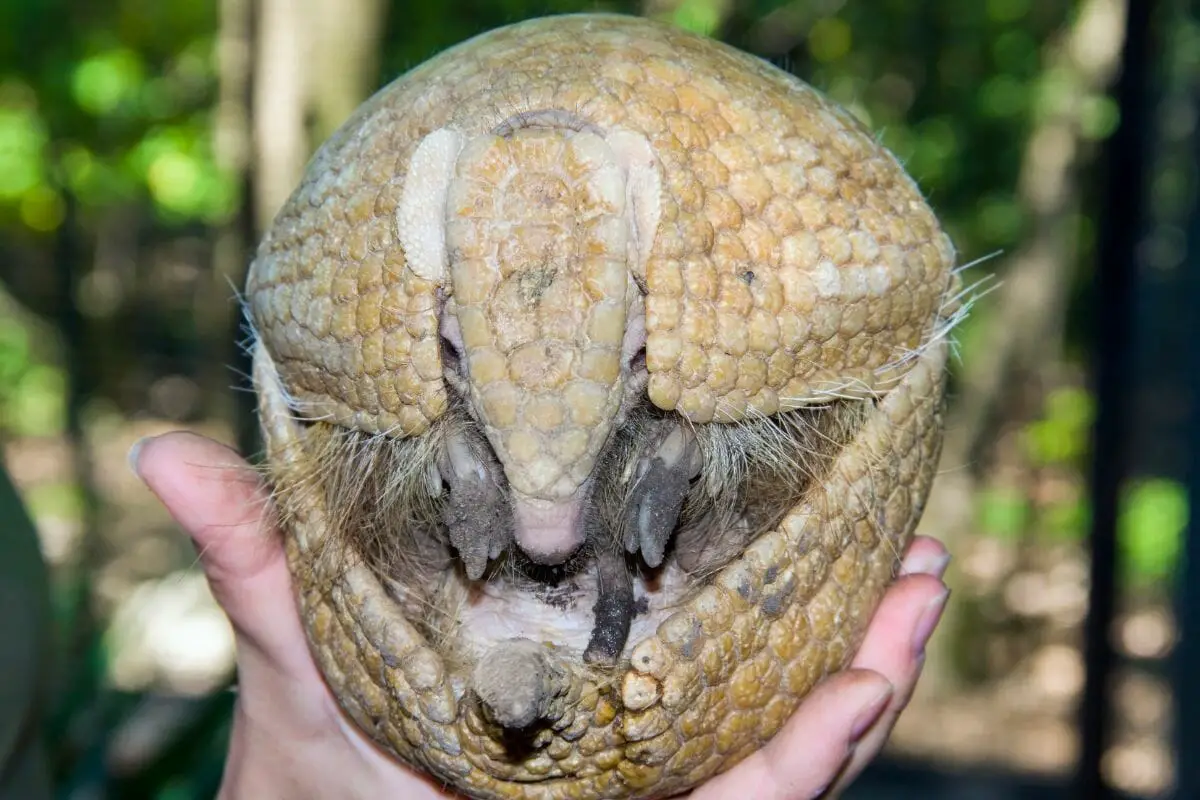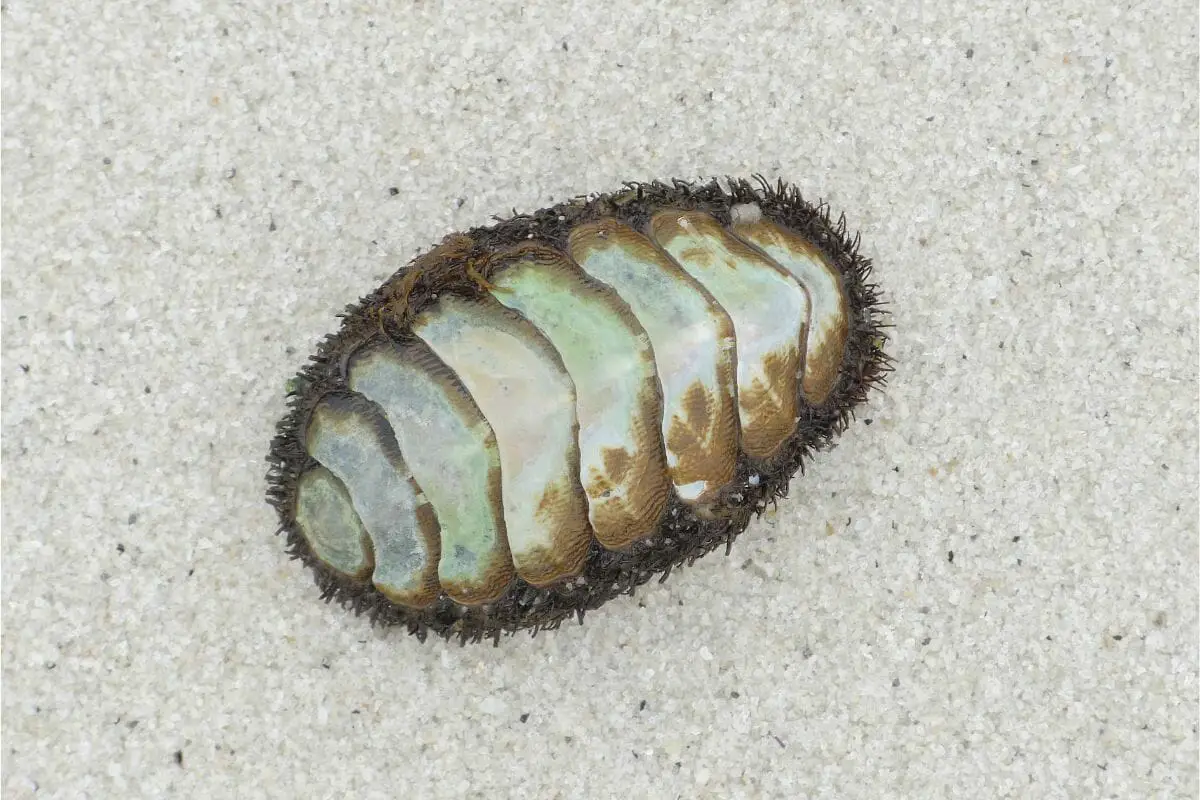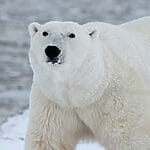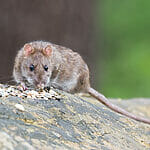Volvation is the term used to describe an animal that rolls into a ball to present the hardest part of its body for protection.

There are a number of animals that do this, and in this article, we’ll be explaining which animals do this and why. However, there are other reasons that animals may roll into a ball.
Why Do Animals Roll Into A Ball?
Animals have many reasons to roll into a ball, with the main reason being for protection. Some creatures will roll into a ball so they can defend themselves from predators.
By rolling into a ball, they may be able to show off a more dangerous part of their body, or a much harder part that’s more difficult for a predator to bite into.
However, some may also roll into a ball to protect themselves from the elements, or even do this as a form of movement.
Rolling into a ball is a helpful method of protecting certain creatures that may otherwise be prey to larger creatures. Some may also find that rolling into a ball will protect them when the weather isn’t in their favor.
Now, let’s find some of the animals who are most well known for rolling into a ball when they need to.
1. Armadillo
When you think of animals turning into a ball, the first to come to mind is the armadillo. Armadillos have a tough shell, and it’s the tough shell that they’re named after.
There are a variety of different types of armadillos, but you may be surprised that it is only one type of armadillo that actually rolls into a ball.
Tolypeutes consist of two different species of three-banded armadillos, and you can only find them in South America.
These types of Armadillos are the only ones who rely solely on their armor for protection, and are the only type who can roll into a ball for protection.
Other armadillos are incapable of rolling into a ball due to the number of plates they have on their shells. It is said that they may roll into a ball as they are unable to dig burrows for themselves, and so need to look for abandoned ones.
Of the Tolypeutes, there are two species: the Southern three-banded armadillo and the Brazilian three-banded armadillo.
You can find the Southern three-banded armadillo in the northern parts of Argentina, the southwestern regions of Brazil, Paraguay, and in Bolivia. The Brazilian three-banded armadillo is named for the only country that it can be found: Brazil.
2. Armadillo Girdled Lizard
Also known as the armadillo lizard, armadillo spiny-tailed lizard, and the golden-armadillo lizard, this lizard is known for rolling into a ball when it is frightened.
While its common name takes inspiration from the armadillo, its scientific name is Ouroborus cataphractus. The armadillo lizard is named after the mythical ouroboros, as it looks like the world-eating snake of legend.
When it rolls into a ball, it takes a form similar to the ouroboros, rolling into a ball and putting its tail in its mouth. Due to its armored scales, it is named for the armadillo.
You can mostly find armadillo girdled lizards along the western coast of South Africa, where it thrives in desert areas and lives in rocky crevices.
The armadillo girdled lizard is classed as near threatened by the International Union for Conservation of Nature, as it was previously collected under the pet trade. However, it is now illegal to trade them as pets.
3. Chiton

You may have seen a chiton at some point in your life, as these mollusks are found around the world. These mollusks may be more at home in water, but you can also see them out on rocks by the sea.
These mollusks go by many names, and you may have heard of them as gumboots, sea cradles, or coat-of-mail shells.
Chitons have eight different shell plates that overlap slightly, so it can still move. The shell serves as a source of protection from predators, and they curl into a ball when removed from rocks.
The main predators that hunt chitons are people, crabs, and fish, so the shell serves as a way to prevent them from being eaten. When it dies, the girdle no longer holds them together, and so the shell falls apart.
4. Earthworms
Earthworms can be found all around the world, and are a commonly found invertebrate. You can usually find them in soil.
However, in some cases they are also an invasive species that can destroy younger organisms as they consume nutrients that allow young plants to grow.
These worms rely on optimal temperature conditions to survive, and also require moisture to absorb the nutrients they need.
If there is a heat wave or drought, earthworms may roll into a ball so that they have better access to oxygen in order to breathe.
5. Golden Wheel Spider
You can find the golden wheel spider in South Africa, where it is native to the Namib Desert. They are roughly 20 mm in size, and are a small huntsman spider.
Unlike other spiders, (see also: The House Spider: Everything You Need To Know)it doesn’t produce its own web, and instead, it buries itself into a silk-lined burrow. It can shift up to 80,000 times of its body weight, but as it burrows, it is weak to its main predator: the pompilid wasp.
To escape the pompilid wasp before it can sting and paralyze it, the spider will roll into a ball and escape at a speed of 1 meter per second. However, it can only do this when it is on a sloped dune, and as a last resort to escape.
6. Hedgehog

Regularly found in Europe, Asia, and Africa, hedgehogs are known for having spiked quills that can be amplified by rolling into a ball. Their quills are made from keratin, so when they curl into a ball, their quills will harden and scare predators away.
Like many other older mammals, hedgehogs have adapted to a nocturnal way of life. They could once be found in North America, but they have long since been extinct, and cannot be found in the wild there.
Although they can get other creatures away from them with their quills, they will also anoint their quills with different scents from their environment to evade their predators.
Before a predator catches them in their mouth, hedgehogs can also curl into a tight ball and ram their enemies, in a way that is not too dissimilar to the character Sonic the Hedgehog.
7. Isopods
Over 10,000 species of isopod live around the world, and they can be found on both land and in the sea. The one distinct feature they have in common are their shells. They rely on water and moisture to survive, even if they are on land.
If they run out of water, they will roll into a ball to preserve moisture within their shells.
However, not all species can roll into a ball. There are other species of woodlice that don’t curl up because they are unable to. Isopods such as Oniscus and Porcellio can’t roll into a ball because they have short pointy tails at the end of their bodies.
These tails can’t be found on their more modern relatives.
However, isopods are also known to roll into balls when a predator hunts them. Nowadays, it is common for isopods to be kept as pets.
Many people will keep their isopods in terrariums, and may also keep them with reptiles and amphibians to maintain their habitats.
8. Pangolin
These are also known as scaly anteaters, with pangolins having large keratin scales that cover their body for protection.
These creatures are nocturnal, and are listed as threatened by the International Union for Conservation of Nature, as they are regularly poached for their scales.
They can mostly be found in Asia and sub-Saharan Africa. While their scales are what makes them valuable to poachers, they are also their biggest defense against poachers.
Their scales are made of the same material as human nails, and so when they curl up into a ball the scales sharpen.
Unfortunately, some species of pangolin are already extinct, and the remaining pangolin are on the red list.
Over the years, pangolins have been targeted for food and due to the belief that their scales and flesh can be used in Chinese medicine, however, this has since been disproven by scientists.
Final Thoughts
There are many reasons an animal can turn into a ball, but there are some species that rely on this as a defense mechanism.
However, some animals may only roll into a ball to preserve moisture, and others may choose to turn into a ball to make a quick escape. There are so many species capable of curling up, and these animals are the most renowned for this ability.
If you want to find out more fun facts about animals, (see also: Animals That Kill For Fun)then why not check out some of our other articles. We’re sure you’ll want to discover more about wildlife and how you can help them.
- What Should I Do If A Koala Bites Me? Safety Guide - 2024-05-30
- Are Kangaroos Born Without Hind Legs? A Fascinating Journey - 2024-05-30
- Animals That Look Like Squirrels - 2024-05-30









